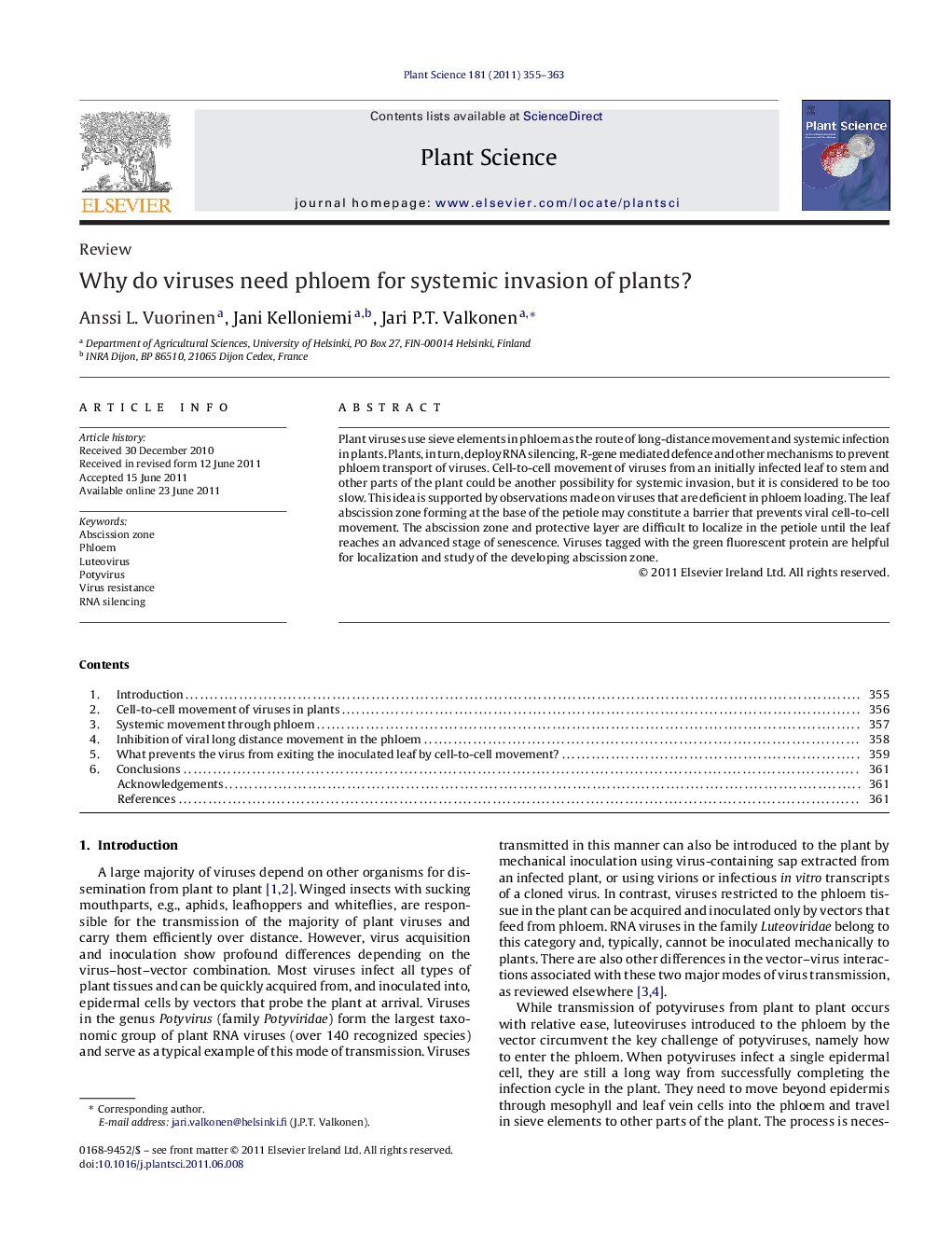| Article ID | Journal | Published Year | Pages | File Type |
|---|---|---|---|---|
| 2017517 | Plant Science | 2011 | 9 Pages |
Plant viruses use sieve elements in phloem as the route of long-distance movement and systemic infection in plants. Plants, in turn, deploy RNA silencing, R-gene mediated defence and other mechanisms to prevent phloem transport of viruses. Cell-to-cell movement of viruses from an initially infected leaf to stem and other parts of the plant could be another possibility for systemic invasion, but it is considered to be too slow. This idea is supported by observations made on viruses that are deficient in phloem loading. The leaf abscission zone forming at the base of the petiole may constitute a barrier that prevents viral cell-to-cell movement. The abscission zone and protective layer are difficult to localize in the petiole until the leaf reaches an advanced stage of senescence. Viruses tagged with the green fluorescent protein are helpful for localization and study of the developing abscission zone.
• Plant viruses use sieve elements for systemic movement and infection in plants. • RNA silencing and other defence mechanisms can prevent phloem transport of viruses. • Many viral movement proteins control phloem transport and RNA silencing suppression. • Leaf abscission zone may prevent viral cell-to-cell movement and exit from the leaf.
